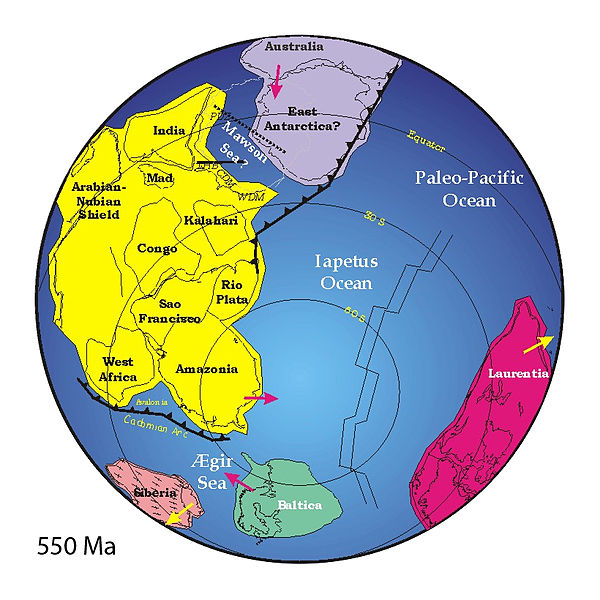
An article published in the journal “Nature Communications” offers a possible explanation for the Cambrian explosion, the greatest diversification event among living organisms ever seen in the history of life on Earth. A team led by Josh Williams, now a PhD student at the University of Edinburgh, used sophisticated biogeochemical models to try to reproduce oxygen changes in the atmosphere just before that explosion concluding that it was the result of an out of the normal tectonic activity during the formation of the supercontinent Gondwana.
The period of the Cambrian explosion ranged from about 541 to 485 million years ago and has been the subject of studies ever since, back in the 19th century, scientists realized that the current phyla and others that disappeared in the meantime emerged within some millions of years, suddenly from a geological point of view. Actually today we know that in the Ediacaran period, the one that preceded the Cambrian, there was already an abundance of life forms which, however, were replaced really quickly by very different organisms, one of the reasons for current discussions with even bitter controversies in paleontology.
Charles Darwin himself recognized the problem but at his time the paleontological and geological knowledge was too limited to offer a solution. Many scientists now believe that before the Cambrian explosion the levels of oxygen in the atmosphere increased and over time this allowed the new organisms to thrive, giving rise to that extraordinary diversification whose effects still last. The problem is to understand what made oxygen levels increase and Josh Williams started working on this problem when he was an MSc student at the University of Exeter.
The new reconstruction starts from the formation of the supercontinent Gondwana during the Ediacaran period, between about 635 and 541 million years ago. The image shows the possible situation during the final stages of that formation, about 550 million years ago. During that geological event there was a great increase in arc volcanism with chains of volcanoes even thousands of kilometers long in the areas where continental and oceanic tectonic plates collided. That caused a release of carbon dioxide from the ancient sedimentary rocks with a greenhouse effect that warmed the planet that increased the weathering of continental rocks, causing large amounts of phosphorus to end up in the oceans, a new source of nourishment for photosynthetic organisms that produced more oxygen.
The biogeochemical models used in this research predicted a 50% increase in oxygen levels during the Ediacaran period following that chain of events. Those levels passed the threshold needed to sustain the life of the animals that existed in the Cambrian explosion.
The results of the models match the geochemical evidence available, a good start to prove their validity. Follow-up research can be conducted to test these results and understand if the life forms existing today developed thanks to a peculiar tectonic event that took place over half a billion years ago.

